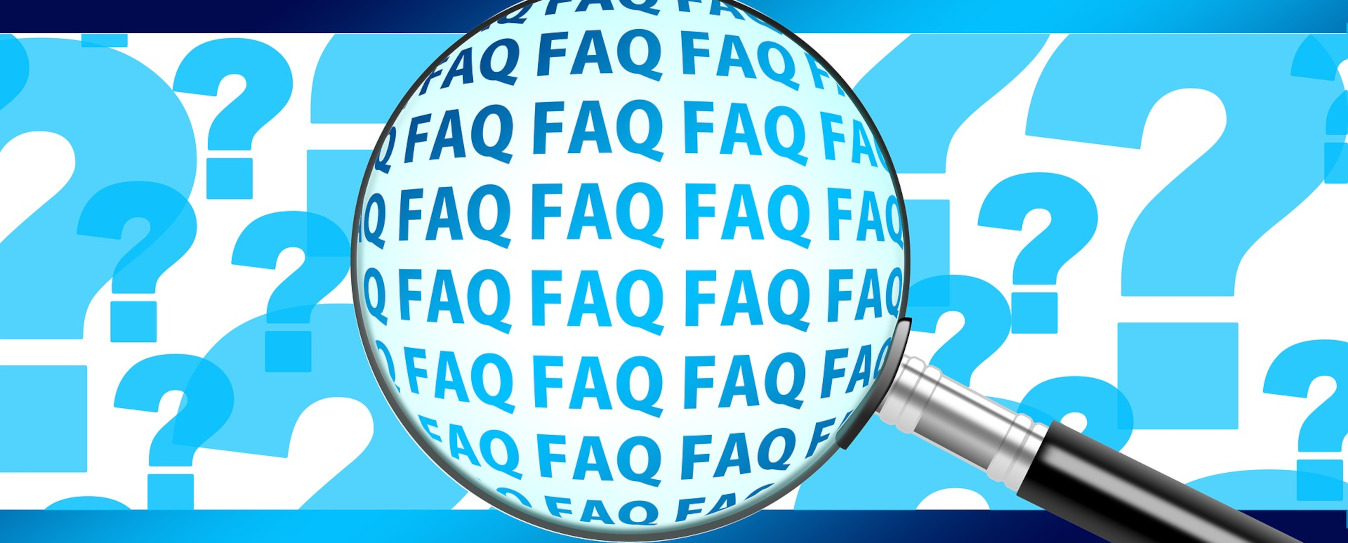
Frequently Asked Questions
Get answers to the most common questions.
Information About Wireless Communications
There are various frequently asked questions ranging from wireless communications, two way radios, pagers, push to talk and more which our staff receives on a regular basis, so we've dedicated a page to answer them. Please contact us if you have questions not covered in this list. We are always glad to hear from you, and are happy to answer any question, big or small!
The range of radios varies depending on the wattage of a radio. Portables tend to be 2-5 watts and mobiles can be 25-50 watts. The type of environment you are in also determines the range. Are you inside or outside a building? Are you in a hilly environment? Are you around a lot of tall buildings or trees? A portable tends to go 1-2 miles and a mobile tends to go 10 miles. Now that is only an estimate because we don't know what type of environment you are in and wattage radio you are using.
No, but your range is drastically reduced without a repeater.
That depends on where you are located. We have our FreedomLINK and FreedomLINK+network that you can rent airtime from for wide area coverage. There may be similar systems where you are located that you could rent from. You will want to confirm the frequency of the system before you buy your product.
If you have an existing system you will want to make sure you are purchasing the correct product based on the frequency band. If you have your frequency, model number, or FCC license we can determine which radio band you should purchase. If you are new to radio, contact us and we can help!
Intrinsically safe, or Factory Mutual, is equipment that has been certified as “safe” in explosive or hazardous environments. This can be any situation where there could be explosive gases or highly flammable materials. The two-way radio products are approved and certified by the Factory Mutual Research Corporation to be used in those environments. Radios that are intrinsically safe need to use the approved battery and accessories to maintain the approval rating of that product. Using a non-intrinsically safe battery or accessory on a product voids the approval rating. Examples of where intrinsically safe equipment should be considered are public safety, refineries, recycling facilities, grain elevators, and chemical manufacturing.
When you're fighting a fire at 11 below zero, your patrol car is broadsided during a high-speed chase, or you are on a remote stakeout you shouldn't have to worry about your communications equipment. To make sure users out in the field have the technology they can rely on under extreme circumstances, a number of organizations have developed stringent wireless industry testing standards and procedures that make voice and data communications faster and more reliable. To ensure reliable performance under the most difficult and dangerous conditions the equipment undergoes "torture tests". The equipment endures “Torture Tests” to make certain that it conforms to their standards. The tests that the products endure include water intrusion, salt, and fog, humidity, dust intrusion, drop testing, high and low t temperatures, sun exposure, temperature shock, vibration, low pressure, and crash testing. It is easy to see why global industry standards are needed. Today’s most widely used ruggedness standards come from The International Electrotechnical Commission, The European Committee for Electrotechnical Standardization, and The United States Military.
UPS batteries typically last three to five years. Life expectancy is based on several factors, including usage (the number of times the unit must go to battery power) and other environmental conditions. To ensure the optimum life expectancy of a battery make sure that the UPS is kept in a cool, dry location with plenty of ventilation. Ideally, the UPS should be kept in a location where the temperature does not exceed 75 degrees Fahrenheit. Also do not store UPS batteries for extended periods of time. New batteries can be stored for up to 12 months. If the battery is not used within 12 months it can lose a great deal of its charge. Batteries that have already been in use should not be stored. Do not exceed 80% of a UPS unit’s rated capacity, on account of the reduction in runtime. Increasing the load decreases runtime.
New Intrinsically Safe Standards
New FM guidelines call for Land Mobile Radio portable devices to operate at power outputs of .5 watts or less-instead of the current 3 watt limit. Existing radios in a system would be grandfathered, but new radios purchased after 2012 would not be certified as intrinsically safe if they exceed the .5 watt threshold. For public safety entities that want to maintain the intrinsically safe standard for their systems for safety and insurance purposes, the proposed dramatic decrease in radio power levels could be problematic.
Yes, all business frequencies require an FCC license. We can assist you in obtaining a license and will help determine which frequency band to use and which best suits your operation of two-way radios.
UHF radios generally offer better building penetration and therefore is generally better suited for indoor as well as areas of high building density. VHF radios generally offer better outdoor coverage. When an application requires a combination of indoor and outdoor use, a UHF radio is preferable.
Installation Tools
- Drill
- 5/16" screw bit
- Phillips screw bit
- Crescent wrench
- 3/4" hole saw
- Socket set
- Wire puller
- Trim removal tool
Before you install the radio in a vehicle, be sure to read the following instructions carefully.
- The radio operates with a negative grounded power supply of 13.2V only. Please check polarity and voltage of the power supply on the vehicle before you install the radio.
- Please make sure there will be sufficient space at the back of the radio for wiring.
- Please check how long the screws will extend and what is in the path of them.
To help you make better use of the product, be sure to observe the following instructions:
- 1. The product and its antenna must be installed in a flat area. Be sure to drill mounting hole with caution, to avoid damage of the vehicle wiring and parts.
- 2. Mount the radio in a location where it is easy to reach the front control panels. For vehicles with an air bag, do not place the product in the area over the air bag or in the air bag deployment area.
- 3. To help ward off radiation, it is recommended to install the antenna in the center of the roof or on the trunk lid, at least 90 centimeters away from occupants in the vehicle.
- 4. Antenna gain must not exceed 3dBi for VHF or 5.5dBi for UHF.
- 5. RF signals generated during transmission may interfere with the operation of other electronic devices in your vehicle.
- 6. The product and its antenna must be properly separated from the gas tank and gas pipe of your vehicle to prevent fire or other risks.
- 7. When the fuse for DC power cord needs replacement, it must be replaced by a fuse with the same specification.
 Why Digital Migration Is Essential To Your Business
Why Digital Migration Is Essential To Your Business
Licensed, professional two-way radios have revolutionized communications for decades and continue to empower millions of people today. From schools to manufacturing, construction sites to hotels, they are reliable, durable, and convenient.
Digital radio offers many advantages over analog, including improved voice quality with greater coverage, better privacy, better battery life and more. That's why it's critical to consider digital migration now - so when you're ready to upgrade, you'll choose a system with the greatest benefits for the long term.
Better Voice Quality
Hear And Be Heard Clearly Without Noise, Static or Distortion
When you use a normal analog radio, every sound that's picked up by the microphone is transmitted. If there's a lot of background noise, it can be very difficult to understand. Digital technology is purer. The software focuses purely on your voice, paying no attention to the machine clatter or the crowd noise around you. The result is exceptional voice clarity.
Radio interference creates static on an analog radio and makes the conversation less intelligible. Voice gets garbled and the message must be repeated. Because a digital radio has automatic error correction, it rebuilds voice sounds and maintains the clarity of the voice, even if a signal is badly corrupted. And since speech is digitally-encoded, you benefit from smarter capabilities, such as advanced software algorithms that can deliver clear voice in the most extreme conditions.
Better Capacity
Get Double The Calls From Every Channel
When it comes to spectrum efficiency, nothing matches digital technology. Digital is so bandwidth-efficient, it can accommodate two completely separate "channels" in one 12.5 kHz channel. As well as making more efficient use of precious radio spectrum, this also minimizes your licensing costs, especially as your business grows. With digital, you can immediately double the capacity of your existing 12.5 kHz channel and enable many more people to communicate without worrying about privacy or interference.
Better Coverage
Your Voice Stays Strong And Clear To The Ends Of Coverage
While all radio signals grow fainter as they go further out, the voice quality on analog radios degrades much more quickly. At the far edge of coverage, even though signal strength is similar, a digital voice will be clear and intelligible while analog voice will be garbled and masked by static.
Digital radios have built-in error correction to eliminate static and make sure voice calls are heard clearly over a greater range. There's no interference, background noise or distortion. Digital maintains voice integrity to the very ends of the coverage area.
Better Battery Life
Communicate Longer On A Single Charge
Battery life is a big challenge for all mobile devices. But because digital technology is much more energy-efficient than analog, it reduces battery drain and improves talk time. Count on your battery to last up to 40% longer when you use a digital radio.
While both analog and digital radios consume about the same power in standby mode, once you start transmitting, digital radios are dramatically more efficient. This is critical for frequent and heavy users who depend on their radios to last the entire shift and can't stop to replace batteries or recharge radios.








